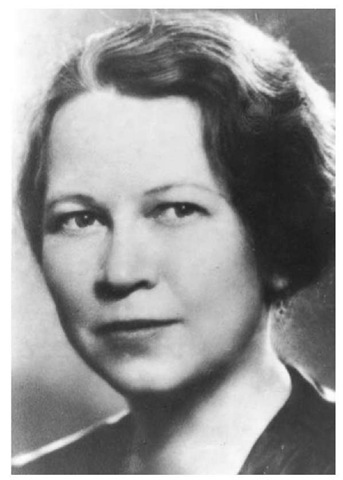Edith H. Quimby developed diagnostic and therapeutic uses for X rays, radium, and radioactive isotopes. The field of radiology was still in its infancy when she began her work, but Quimby’s groundbreaking research ascertained the extent of radiation’s ability to penetrate an object, thereby allowing physicians to use the smallest possible doses of the potentially dangerous substances. Quimby also cofounded the Radiological Research Laboratory at Columbia University, which studied the medical uses of radioactive isotopes (especially in cancer diagnosis and treatment).
Born on July 10, 1891, in Rockford, Illinois, Quimby was one of Arthur and Harriet Hinck-ley’s three children. The family moved frequently during Quimby’s childhood, and she completed high school in Boise, Idaho.
Quimby attended Whitman College in Walla Walla, Washington, majoring in physics and mathematics. After graduating in 1912, she taught high school in Nyssa, Oregon. In 1914, she won a fellowship to study physics at the University of California, where she met and married Shirley L. Quimby (a fellow physics student). Edith Quimby was awarded her master’s degree in 1915 and then returned to teaching high school science for four more years.
Quimby’s career changed course in 1919 when her husband was offered a faculty position at Columbia University. In New York, she accepted a position at the newly created New York City Memorial Hospital for Cancer and Allied Diseases. Working with chief physicist Dr. Gioacchino Failla, Quimby began to explore the medical uses of X rays and radium, particularly in treating tumors. Quimby and Failla would enjoy a 40-year scientific association.
Although physicians had begun to use radiation by this time to diagnose and treat certain diseases, their efforts were often haphazard at best since no standardized techniques had yet been developed. Quimby’s work did much to alleviate this problem. In 1923, she instituted a film badge program so that X-ray film could be employed to gauge radiation exposures accurately. More importantly, she determined the specific radiation doses required to treat tumors. In 1932, she became the first to determine the distribution of radiation doses in tissue from various arrangements of radiation needles. The techniques she devised became the standard in the United States. During this period, she also focused on measuring the penetration of radiation, quantifying the different doses required to produce the same biological effect, such as skin erythema (reddening). In the process, she formulated the concept of biological effectiveness of radiation, which is still employed by radiobiologists today.
Edith Quimby’s groundbreaking research ascertained the extent of radiation’s ability to penetrate an object, thereby allowing physicians to use the smallest possible doses of the potentially dangerous substances.
After spending more than 20 years at Memorial Hospital, Quimby moved with Failla to the Columbia University College of Physicians and Surgeons in 1943, becoming an associate professor of radiology and later advancing to the rank of full professor. While at Columbia, she and Failla cofounded the Radiological Research Laboratory. At their new laboratory, the pair began working with the newly available artificial radioisotopes being produced by accelerators and reactors. They concentrated on the application of radioactive isotopes, such as radioactive sodium and iodine, to treat thyroid disease and diagnose brain tumors. These early clinical trials established Quimby as a pioneer of nuclear medicine. During her tenure at Columbia, Quimby was also involved with several other projects. In addition to working on the Manhattan Project, which created the atomic bomb, she joined the Atomic Energy Commission and advised the U.S. Veterans Administration on radiation therapy.
Quimby finished her career at Columbia University by teaching a new generation about radiation physics and the clinical use of radioisotopes. She retired in 1960, though she continued to research, write, and lecture. She coauthored a book, Physical Foundations of Radiology, and wrote a number of influential scientific papers. Acknowledged as a founder of radiobiology, Quimby received a slew of honors and distinctions. In 1940, she became the first woman to win the Janeway Medal of the American Radium Society. The Radiological Society of North America later awarded her a gold medal, citing her work "which placed every radiologist in her debt." She died at the age of 91 on October 11, 1982.

